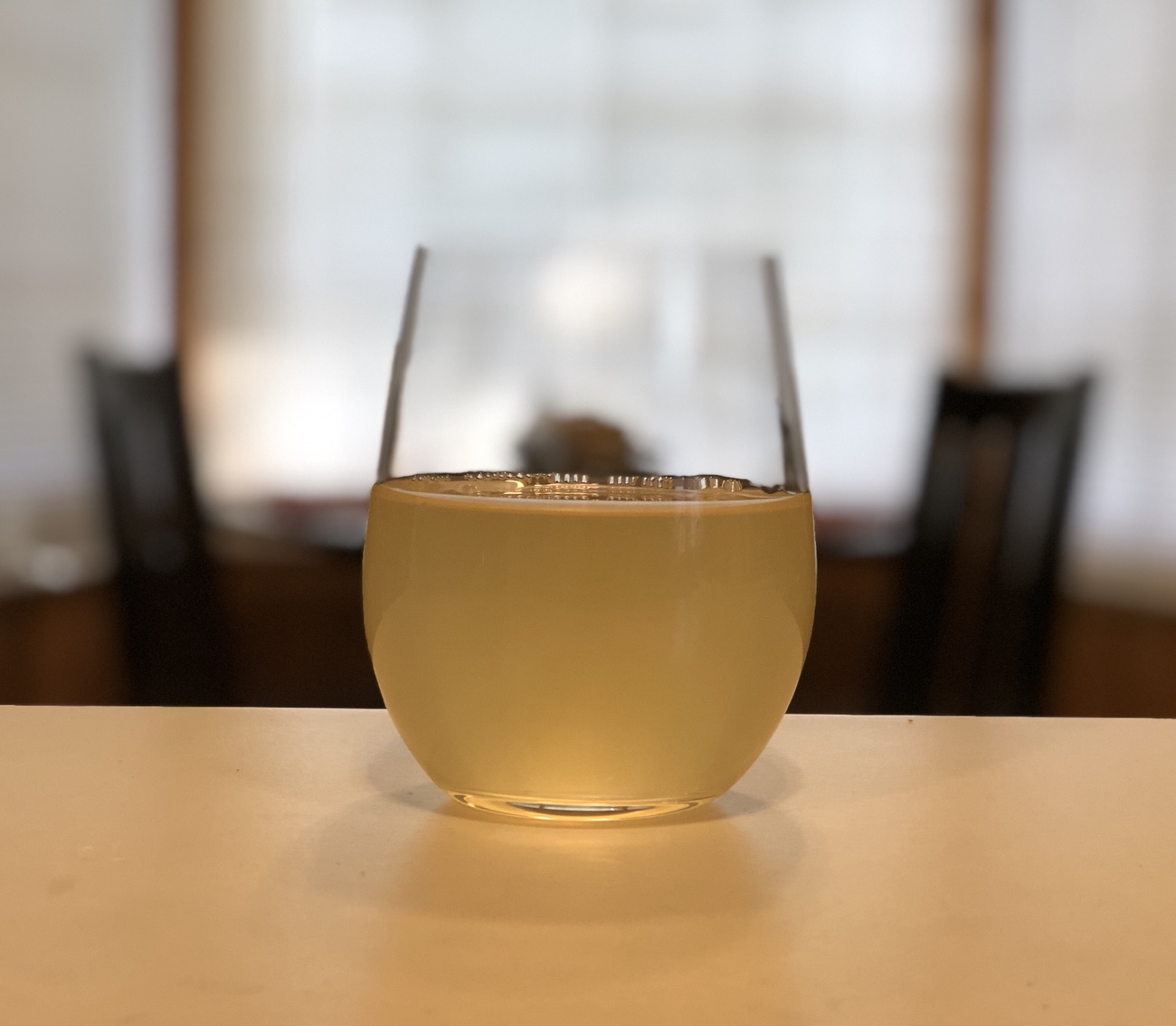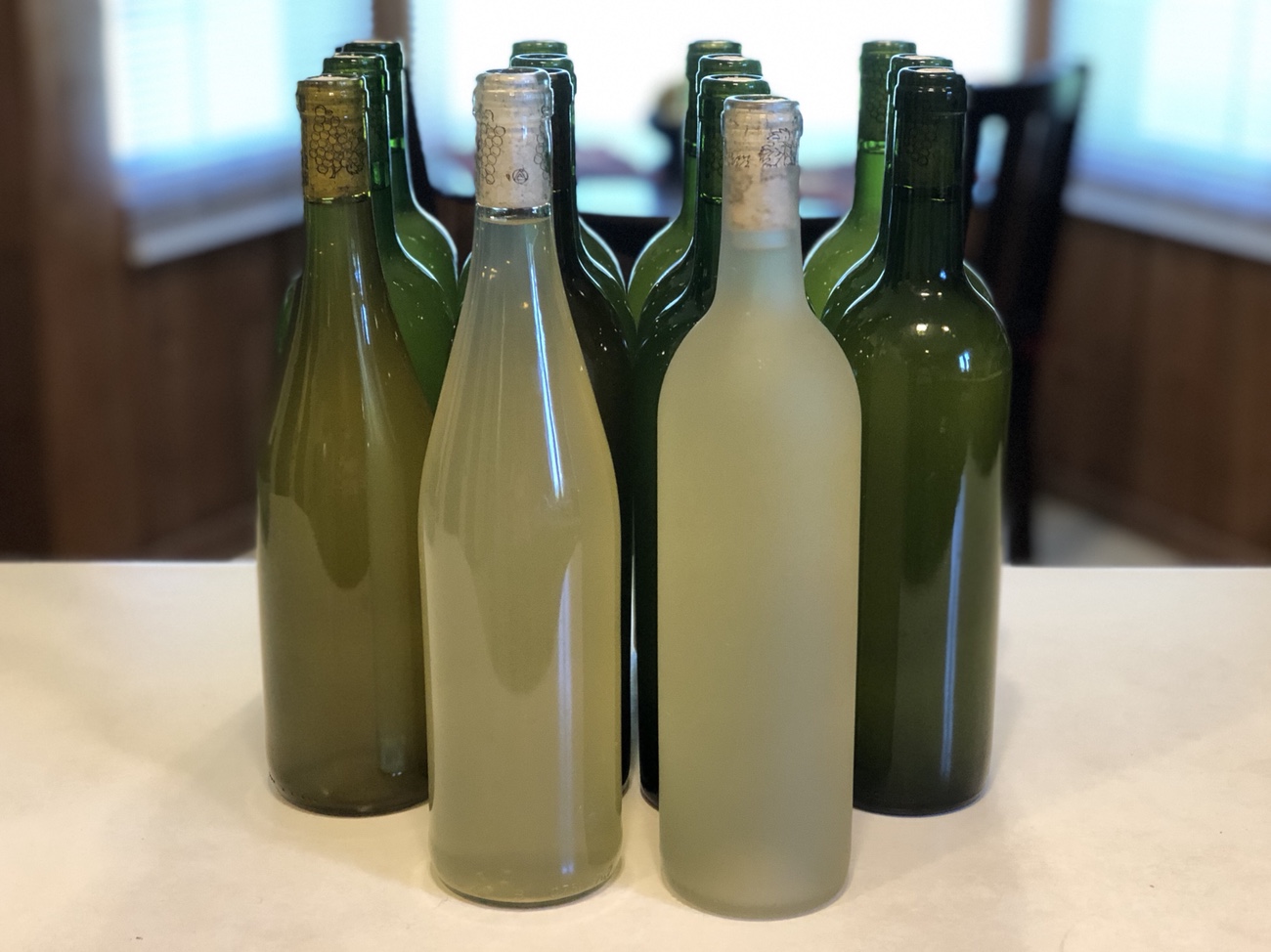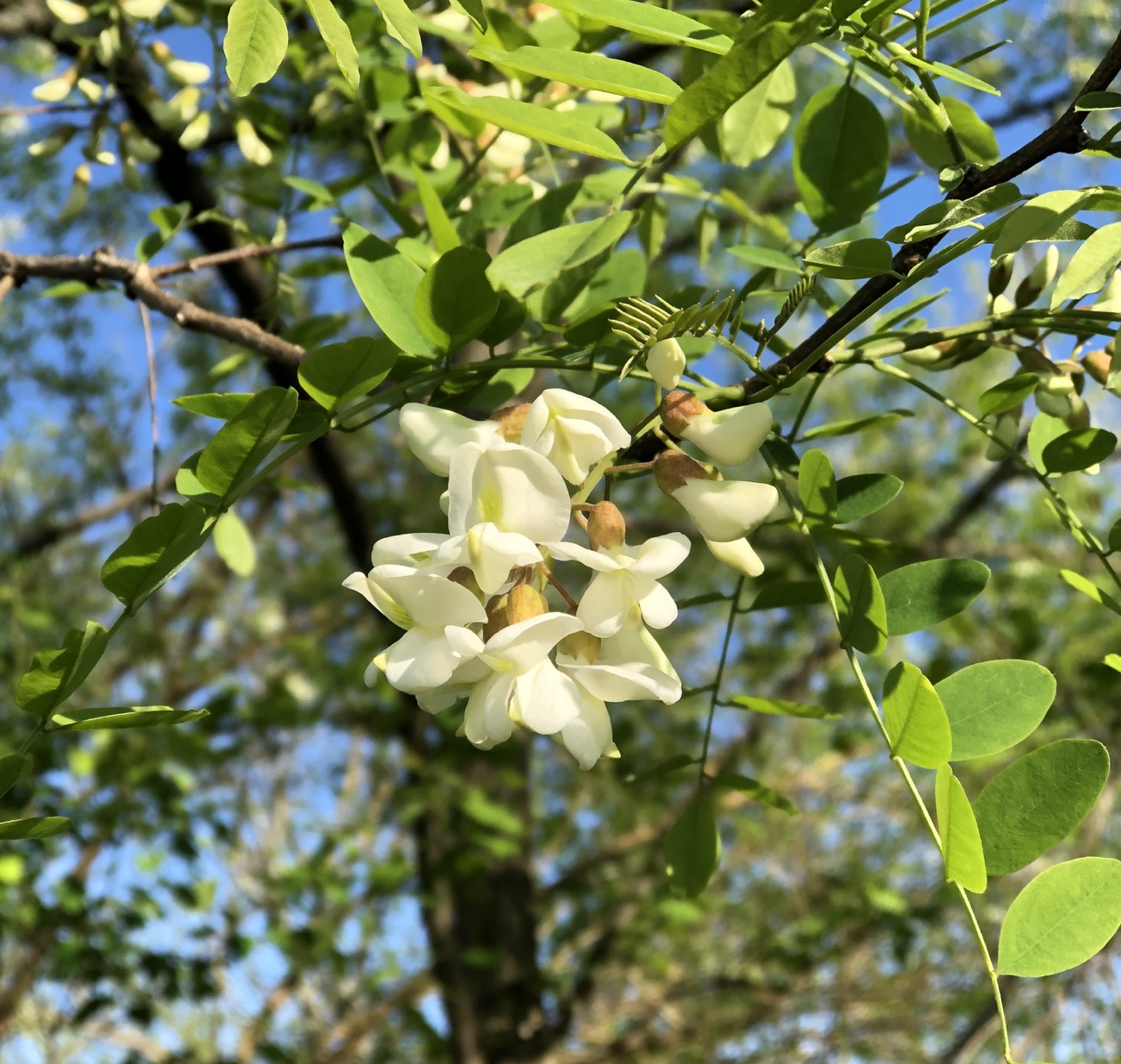
It’s finally time to bottle and sample the much-anticipated (at least by me) Black Locust wine! Yes, the fragrant flowers are edible – in fact, I recently saw a post for fritters made from them that sounded delightful. Like tempura? But back to the wine…
My first impression is that the wine is a bit hazy. That doesn’t really bother me – I like unfiltered beverages. While cloudy is sometimes ok, it’s generally frowned upon in wine. There are those purists who insist that wine be crystal clear, employing fining agents to assist the process, if needed.

I like to let the wine become what it will, and while there are natural fining agents like egg whites or bentonite clay, I’m not inclined to use them. Most of the time, my wines come out lovely and clear; sometimes, they don’t, for a number of possible reasons. A cloudy wine may, for example, still have yeast suspended in it, or it may have a pectin haze. My guess is pectin haze from the sliced lemons and oranges – I’d remedy in future batches by using pectic enzyme or substituting acid blend for the citrus.
Yes, it could spend more time in the carboy clearing, but carboy space is at a premium around here, since it’s prime wildcrafting time. Fermentation appeared to have stopped, so I bottled it and put one in the fridge to sample.
Now to what I consider the most important aspect of a wine: how it tastes. As I’d hoped, the rich fragrance comes through strongly in the wine – it’s floral perfume, the wonderfully unique aroma of those creamy blossoms, in a nicely-balanced wine. The citrus does come through a bit more than expected, but should smooth out with age; next time I make this, though, I’ll skip the lemon and orange and use acid blend, instead.

I know what I’ll be doing next May, when the Black Locust trees are once again in bloom: filling my carboys with the indulgence of this ambrosial wine. Wildcrafting definitely has its rewards!
